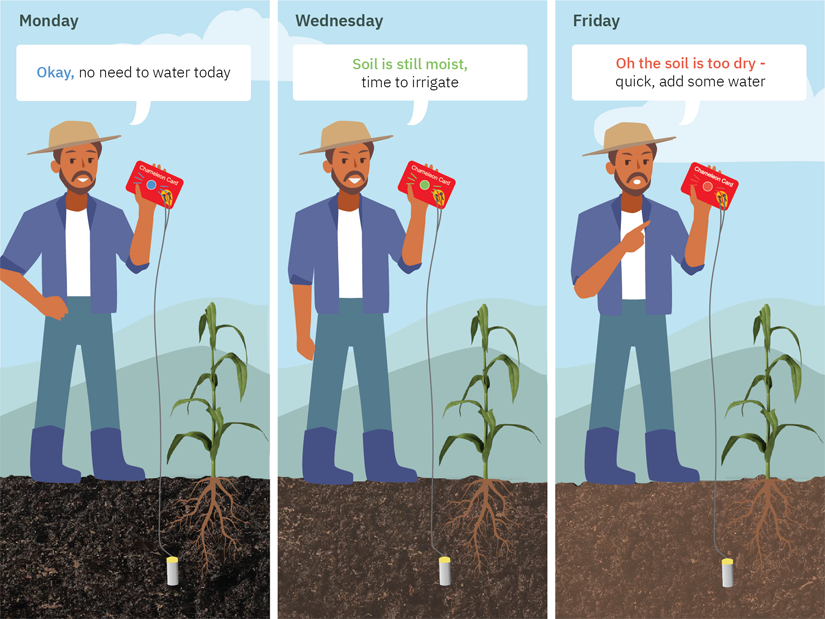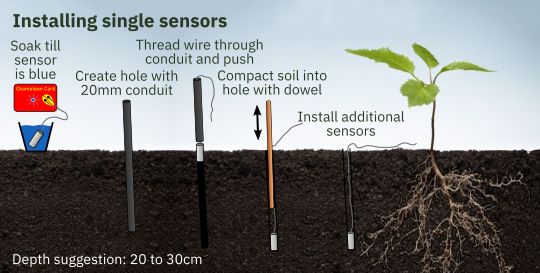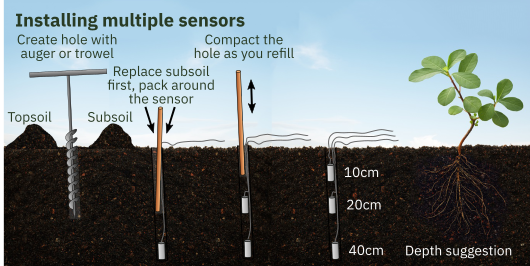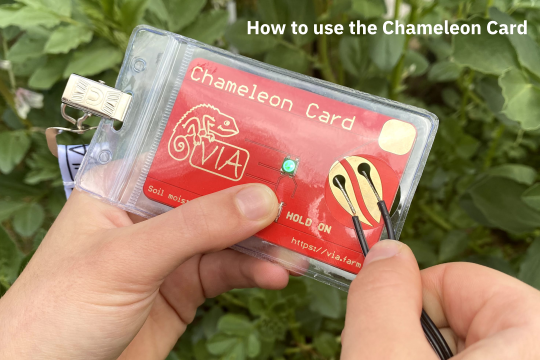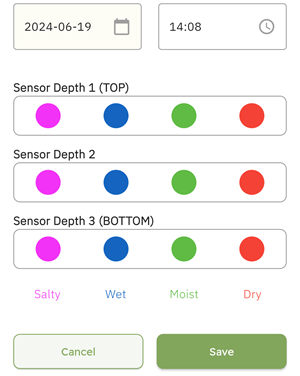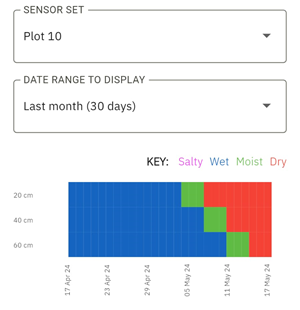The Chameleon Card System has to be the simplest way to measure soil water. Touch the two sensor wires on the card and the LED lights up. The light will turn blue (wet), green (moist) or red (dry) to show the soil water status.
The sensors are the same as we use with the Chameleon Wi-Fi Reader. They are the product of many years of research and will give you reliable readings.
Not everyone needs to have an online record of soil water status. Often a quick check is all you need. If you want to collect and organise the data from your Chameleon Card System, and have an Android device, you can use our App which is available to download from the Play Store. This will also create a record of your farm and sensor readings on our website.
For more detailed or frequent data logging please refer to the Chameleon Wi-Fi System.
